Italian Grand Prix: 'Awesome' Lewis Hamilton looks unstoppable
- Published
- comments
"Quite incredible," was Sebastian Vettel's verdict. "Awesome," said Red Bull team boss Christian Horner.
They were describing the pace of Lewis Hamilton on his way to victory in the Italian Grand Prix, and they were spot on.
It was a stupendous performance, easily Hamilton's most impressive victory of a year that he has by and large dominated utterly from the first race in Australia seven months ago.
There was a scare after the race when it appeared he might be disqualified because of a discrepancy to do with his tyres. But in the end, Mercedes were cleared.
Even had they not been, it was hard to see how even that would have done much to slow Hamilton's momentum towards the title. Now, with an advantage of 53 points, a very early conclusion to the destiny of the championship is very much on the cards.
Hamilton untouchable
The world champion is in a league of his own at the moment, driving a car that is comfortably the class of the field.
The bare statistics are impressive enough - seven wins from 12 races and 11 pole positions, including a run of seven in a row that shows no signs of stopping.
But when you bear in mind that Hamilton only lost Monaco because of a strategy error by his team, and might well have won in Austria, too, had his engine not misbehaved at the start, "awesome" and "incredible" barely cover it.
Team-mate Nico Rosberg, the only man who has comparable equipment to Hamilton, just cannot get near the world champion.
Rosberg was compromised in qualifying this weekend by having to fit an older engine - in both specification and in terms of life - after a problem was discovered with the new-spec one in his car.
But there was no indication that he would have beaten Hamilton to pole if that had not happened.
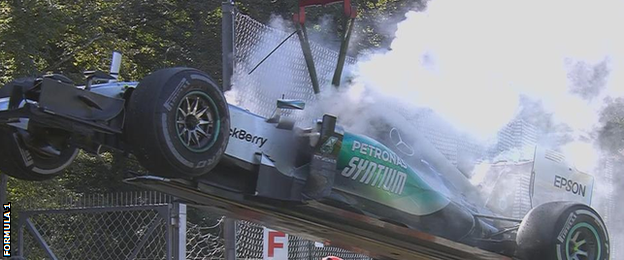
Nico Rosberg's race came to a smoky end three laps from the finish
And in the race, Hamilton was incredible. He pulled out a 1.5-second lead over Vettel's Ferrari between the first chicane and the end of the first lap, and another 11 in the subsequent 19 laps.
From time to time in that opening stint, Hamilton was the best part of a second a lap faster than the Ferrari, an advantage that led to Vettel's admiring response later.
An unexpected alarm
That margin was again clear when Hamilton's engineer Peter Bonnington came on the radio with seven laps to go and told him he needed to put in some flat-out laps - or "hammer time", as he put it.
Hamilton was flummoxed by the request, but Bonnington merely replied: "Don't ask questions; just execute."
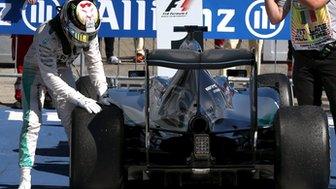
The need for this became apparent just before the end of the race, when it emerged that Mercedes had been referred to the stewards because the starting pressures of the left-rear tyres on both cars were below the minimum permitted by Pirelli on safety grounds.
In Hamilton's case, the margin was only 0.3psi, a 1.5% margin that engineers from rival teams admitted would make almost no difference, while adding that that was hardly the point. Rules are rules, they said. You're either within them or you're illegal.
Except in F1 it is not always that way.
In the past few years, governing body the FIA's approach to finding cars have features that break the rules has tended - but not always - to be to warn the team in question and tell them to change the part. Either that weekend or - in some cases - for the next one.
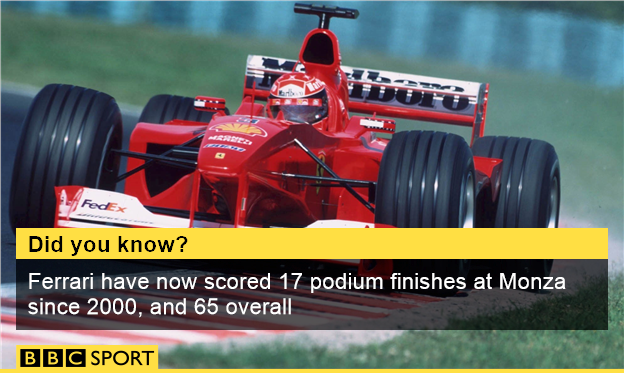
This, though, was a different scenario; it was ruled that although the tyres were technically not in compliance, Mercedes had not done anything wrong.
The investigation by the stewards revealed not only that the tyres had been above the minimum pressure when fitted to the car but that the tyre blankets that maintain the temperature - to which pressure is directly related - were unplugged, "significantly below" the maximum permitted temperature, and "significantly different" from those of other cars.
On these grounds, the stewards declared that Mercedes had "followed the currently specified procedure for the safe operation of the tyres".
There were cynics who dismiss the verdict as a fudge, but Mercedes F1 boss Toto Wolff said he could "absolutely rule out" any deliberate foul play, such as setting the temperatures at a point that met the minimum when they were measured but allowed them to drop below that point for a competitive advantage by the time the race had started.
"We have worked the whole week with Pirelli to find solutions to make the tyres safe, and we were trying to guide them on minimum tyre pressures and minimum camber," said Wolff.
"I can rule out that we would be the ones who would try to gain an advantage in a way that is absolutely unscientific and uncontrollable.
"How would you want to measure how much the tyre pressure drops once you disconnect the blanket? Why would you have it only one on tyre and discrepancies between the tyres?"
Tyres the focus of wider controversy
These minimum tyre pressures were a focus of attention all weekend.
Arriving in Monza, in the wake of the dramatic tyre failures suffered by Vettel and Rosberg at the previous race in Belgium, the teams were given new, much higher limits on minimum tyre pressures, on safety and precautionary grounds.
Pirelli did not want to take any chances, and raising the tyre pressures makes them less vulnerable to the sorts of failures that occurred at Spa.
But the size of the change caused dismay among the teams, Hamilton himself describing it as "a disaster" during the media preview day on Thursday.

Hamilton and his Mercedes team were under investigation for a breach of tyre pressure regulations
Twice in the space of 24 hours the minimum pressures were revised downwards - but remained significantly higher than at the previous race.
Then, Pirelli made it clear to the teams that it suspected some might be trying to circumvent the new requirements by finding ways of meeting the legal requirement when the car left the pits but then lowering when the car was out on track.
Pirelli is especially sensitive following the failures at Spa, and the critical reaction of some of the drivers.
So sensitive, in fact, that it asked for a meeting with Hamilton, Vettel, Rosberg and Fernando Alonso - all of whom had made criticisms of the company in previous days. F1 boss Bernie Ecclestone was also in attendance, as were the bosses of the Ferrari, Red Bull and Mercedes teams.
Afterwards, Ecclestone made it clear that the drivers had been told to keep any critical observations about Pirelli within the confines of their teams and the manufacturer - and not make them public.
Eyebrows were raised about the decision to effectively gag three of the finest F1 drivers there have ever been, just as there were among other teams about the verdict to let Mercedes off without any form of punishment at all, regardless of the apparent lack of intent.
Hamilton said before the verdict: "If it is 0.3psi it's 0.3, but at the end of the day that had no effect on the car. That small amount on a tyre doesn't do anything, it has be a much bigger amount, a half or one PSI to make a difference.
"Particularly if it's only on one tyre. If it was all the tyres, maybe you can argue it. It would be very much a shame (to have the victory taken away).
"Ultimately that's not the reason we won; we won because we were the quickest."
About that last point, at least, there can be no argument.

Ferrari's Sebastian Vettel finished second at Monza after Nico Rosberg's engine failure
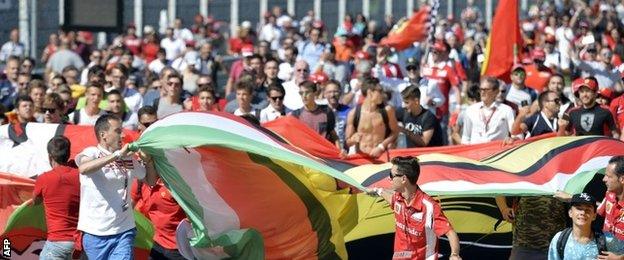
Ferrari's fans poured on to the circuit after the race to celebrate Vettel's late second position
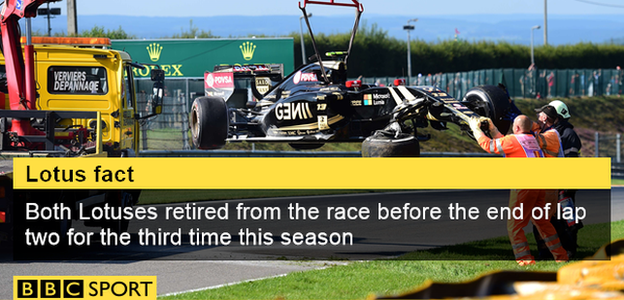
- Published6 September 2015
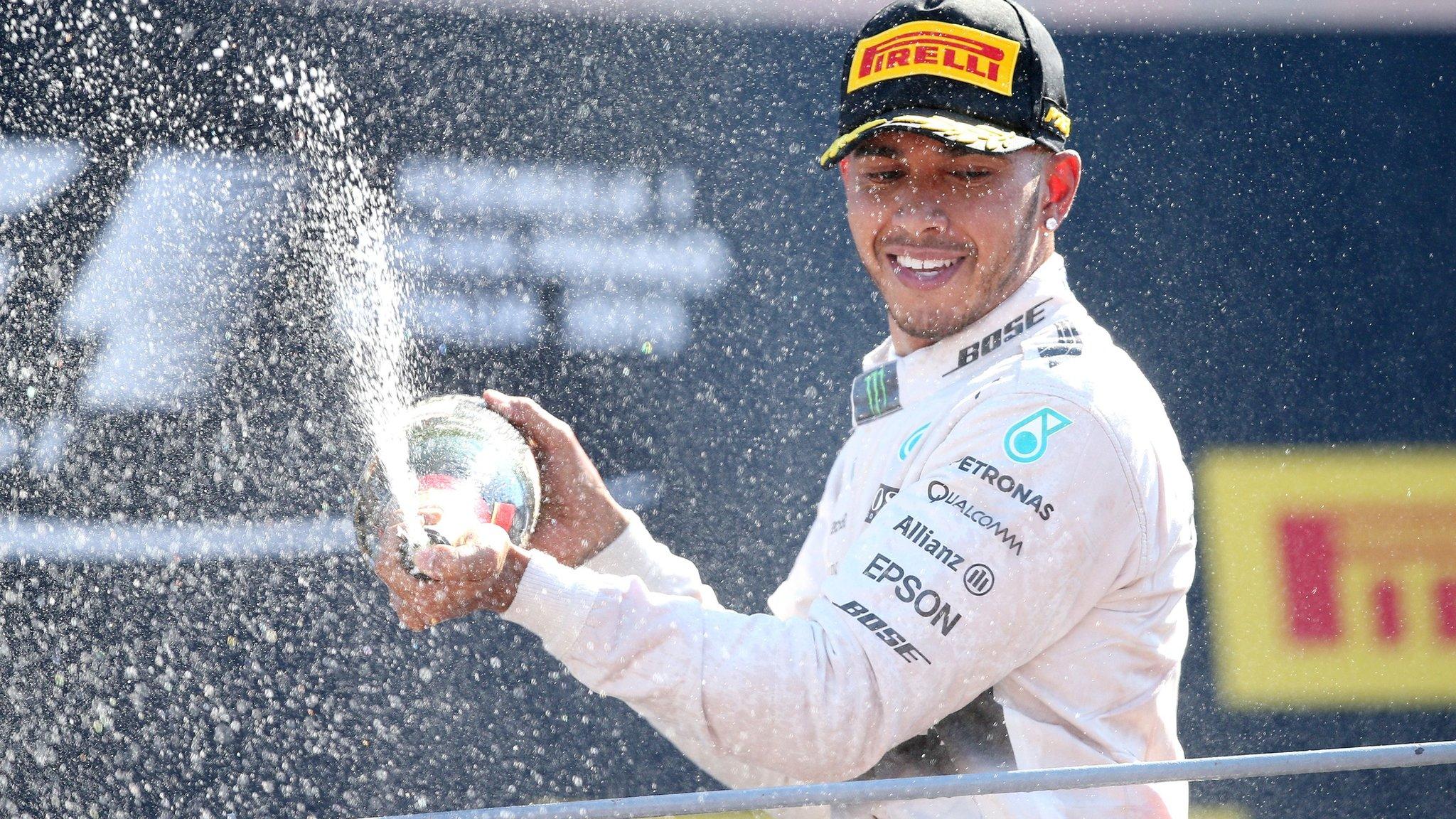
- Published5 September 2015
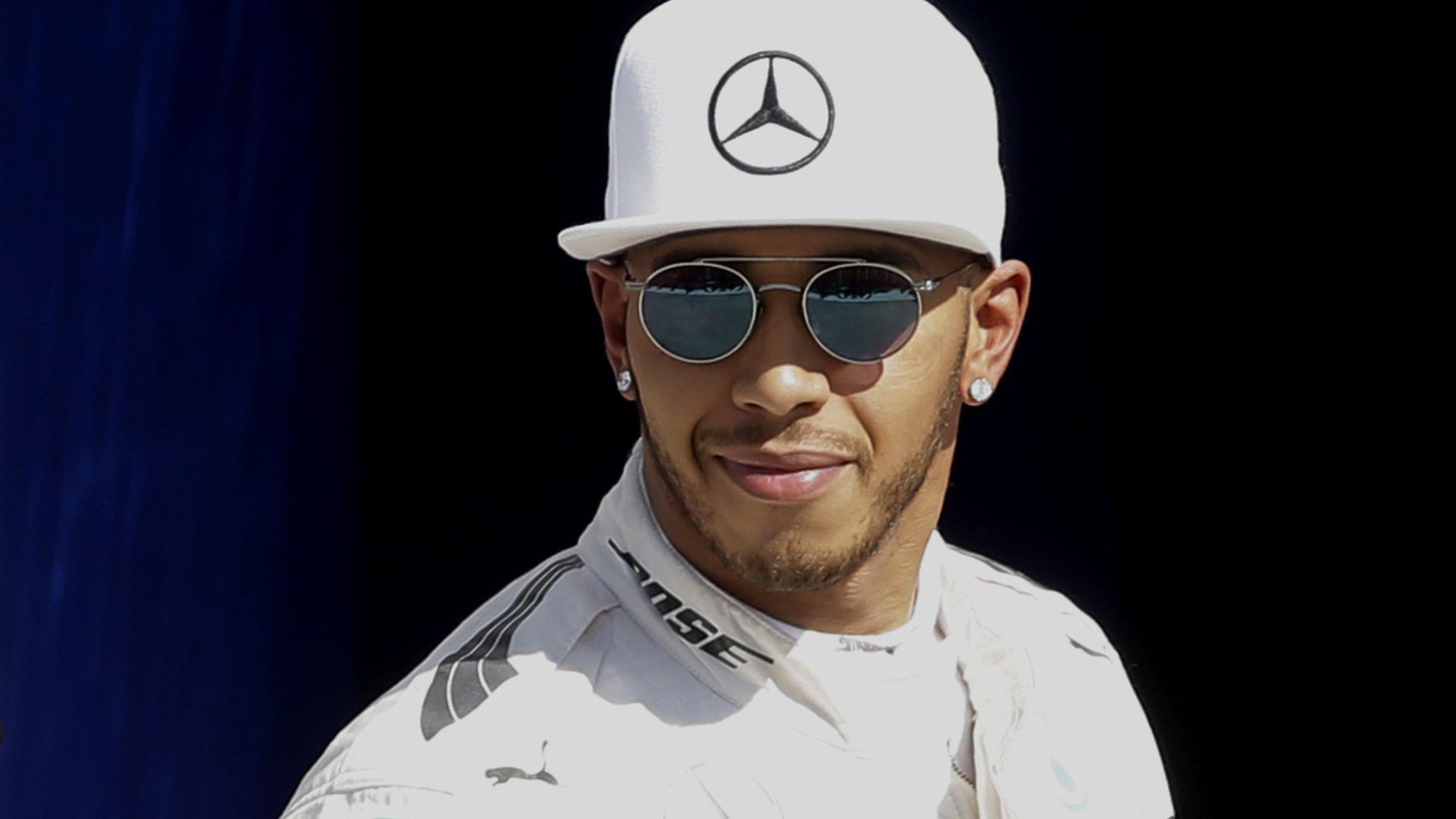
- Published5 September 2015

- Published4 September 2015

- Published2 September 2015
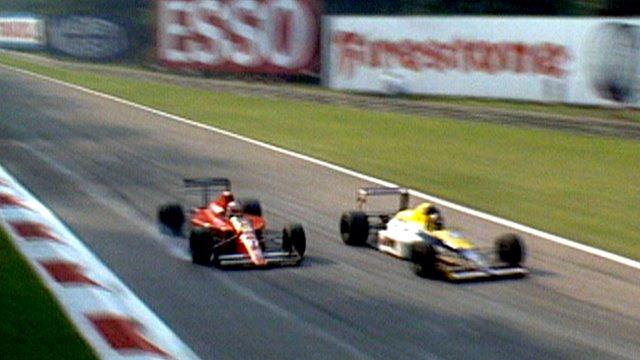
- Published5 September 2015

- Published1 September 2015
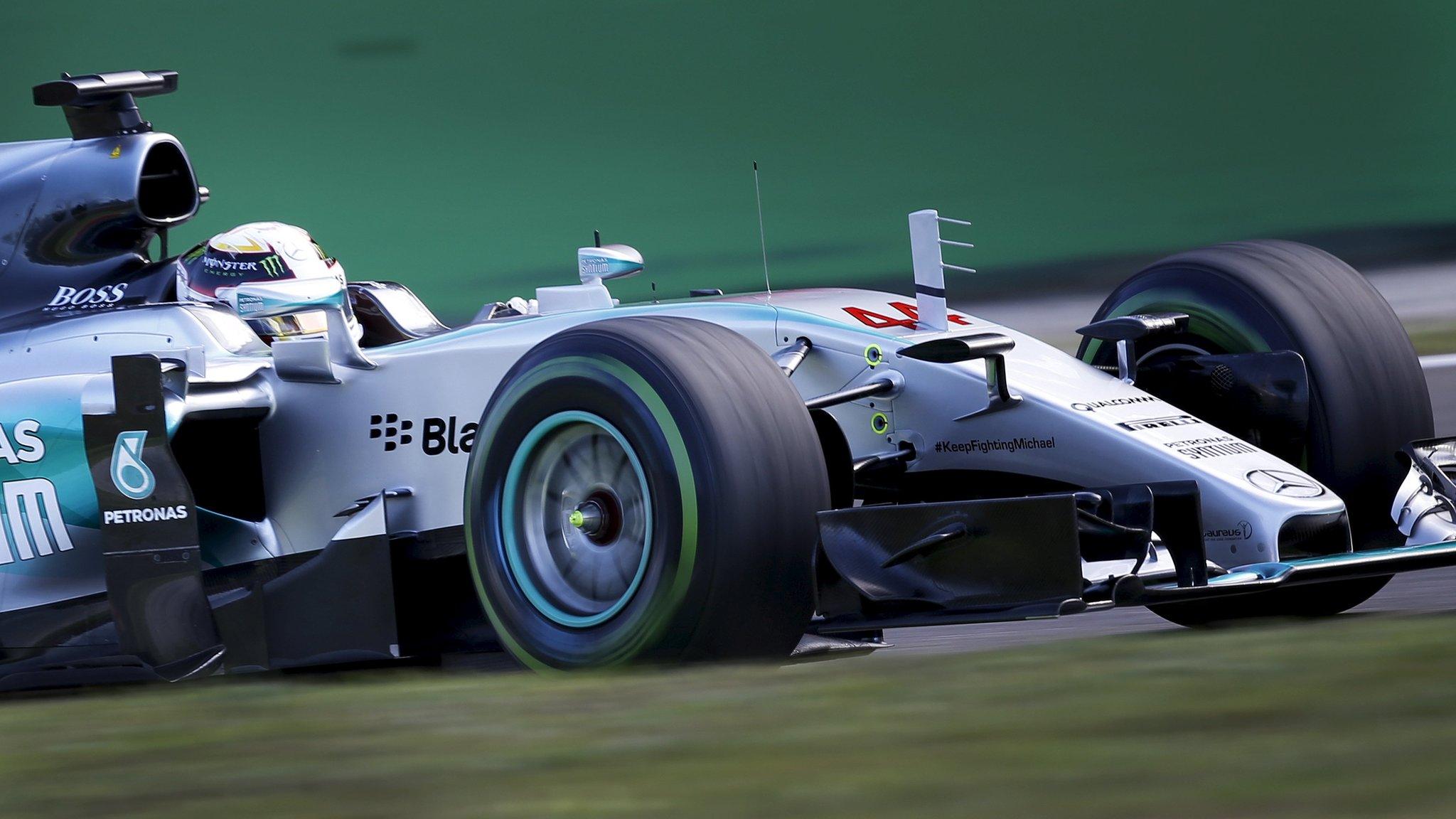
- Published5 September 2015

- Published4 September 2015
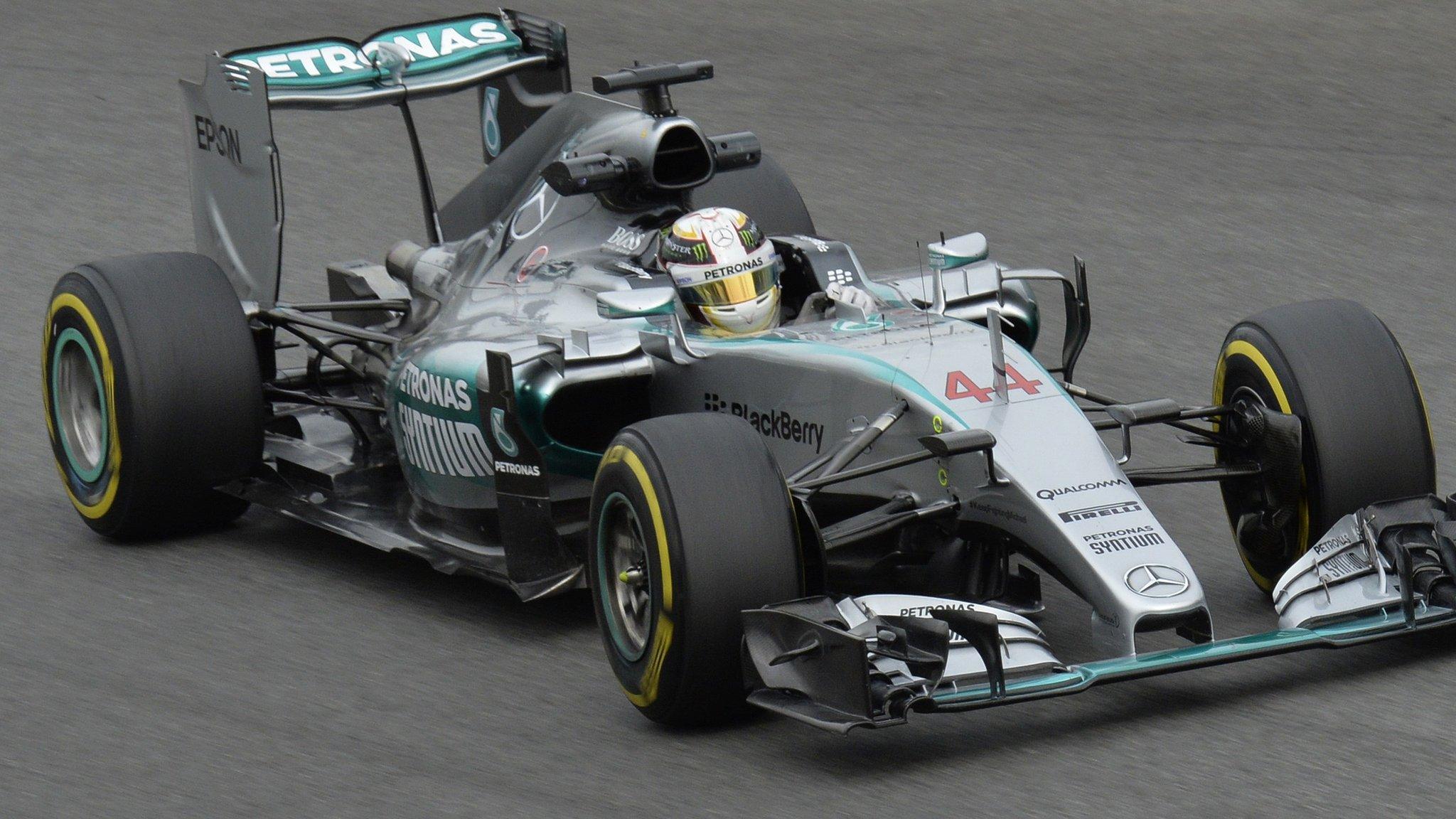
- Published3 September 2015
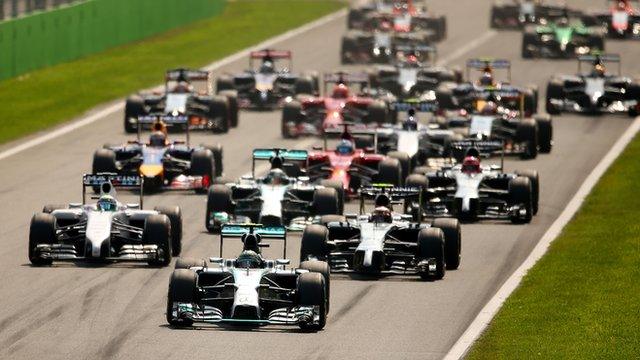
- Published4 September 2015
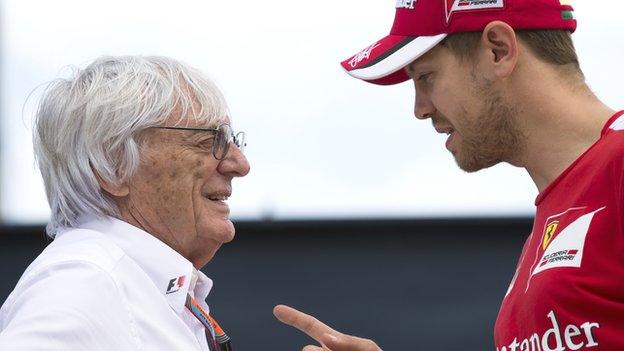
- Published3 September 2015

- Published3 September 2015
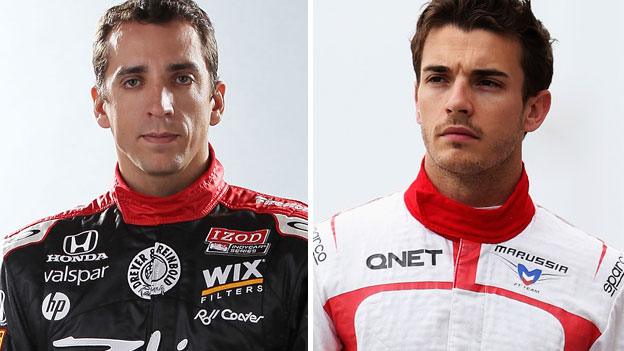
- Published3 September 2015
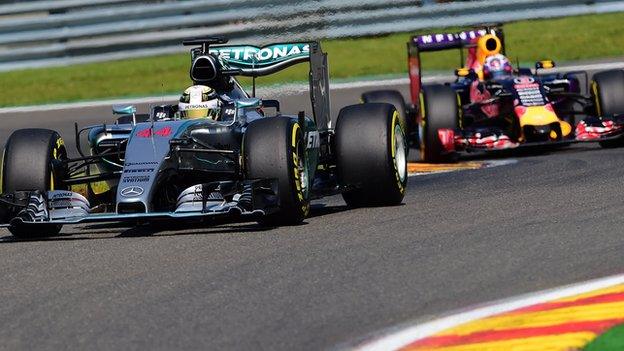
- Published18 December 2015

- Published2 November 2018

- Published26 February 2019
